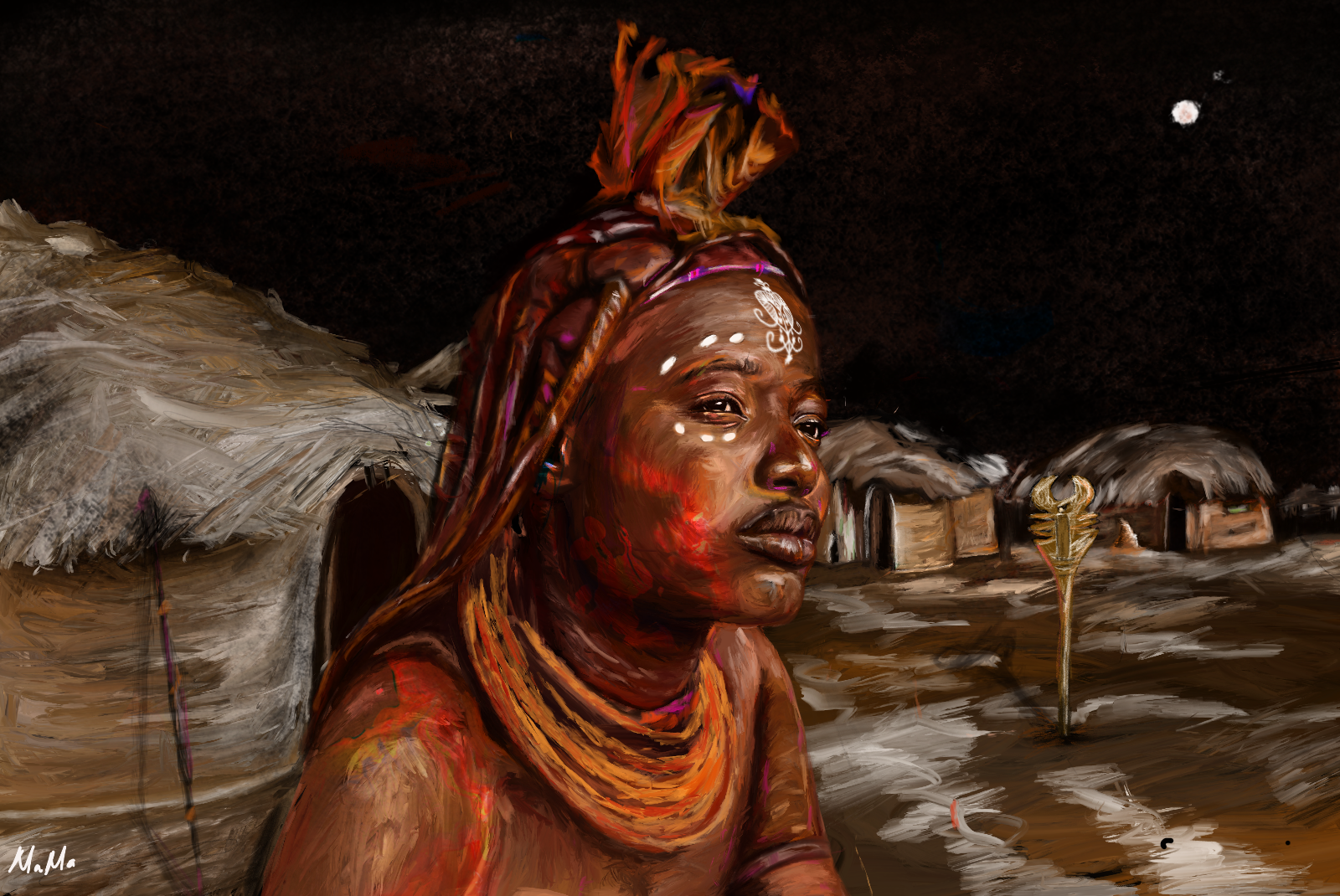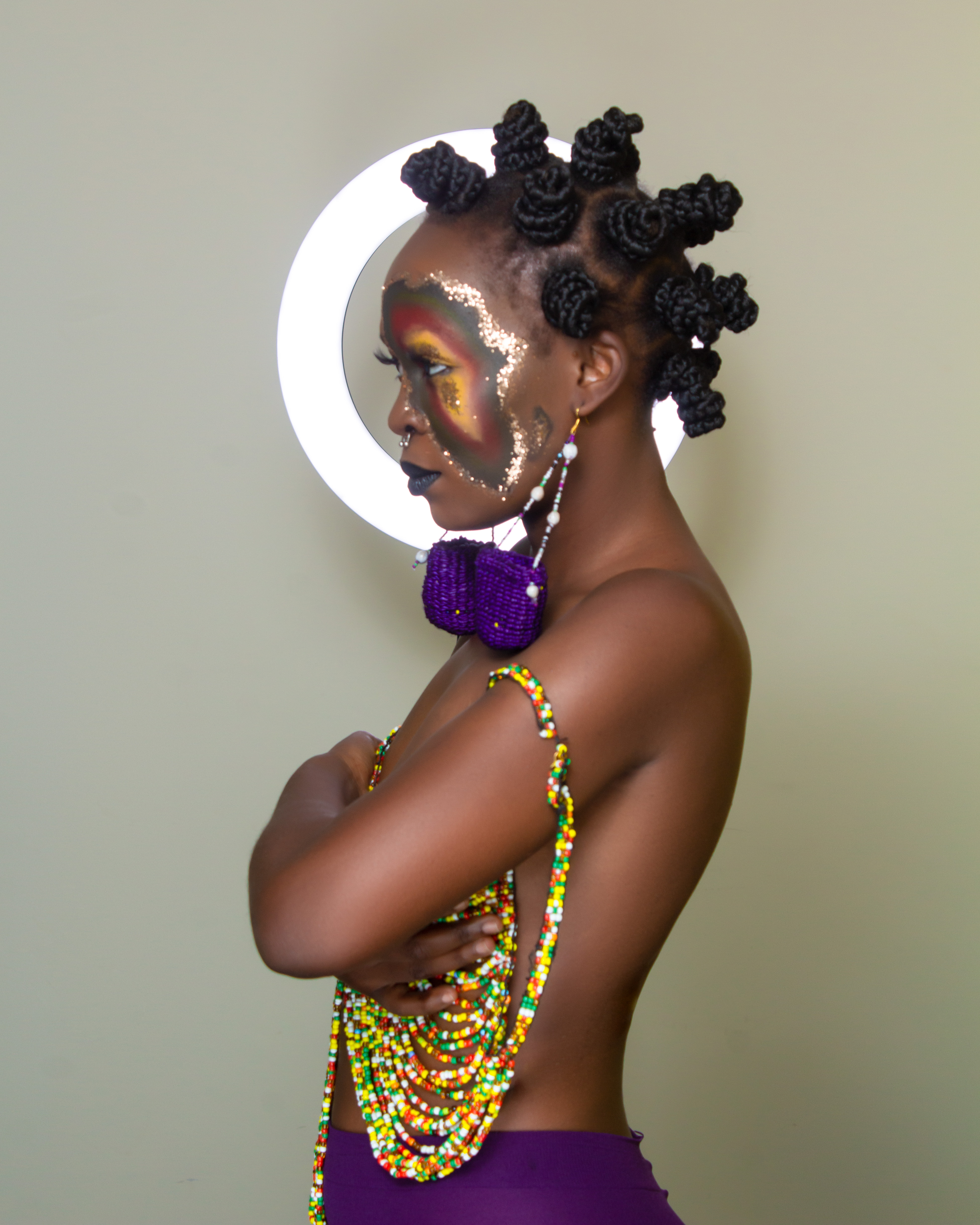
Swiry Nyar Kano is an African History and Spirituality content creator, a mental health advocate, a Microbiology and Biotechnology Graduate and an African Fashion Designer.
Articles by Swiry Nyar Kano

Sexual Pleasure in Precolonial Africa
Has Africa always been conservative towards sex? The answer is No! However, since the assault of slavery and colonization, Africa has viewed certain aspects of pleasure and romance as foreign due to the imposition of foreign values, misinterpretation, and misrepresentation of the precolonial African way of life and sex. Before European contact with Africa, human sexuality was highly valued, and Africa had a well-organized and consistent socialization process where the elderly members of society - like the Ssenga, who were the paternal aunties in the ancient Baganda Kingdom - initiated young members of the society into the concepts and the acts of human sexuality without shame, ridicule or condemnation. However, after colonization, the colonizers succeeded in redefining the concept of African sexuality by shifting its sacredness from communal to individually or religiously motivated sexual relationships, with wrongly channelled freedom of expression and imagination as put by Kiru Taye, and I quote, "Our ancestors were not lying back down and thinking of England" during coitus. Even the sexual art display is not modern. The sexual art display was an integral part of ancient Africa, too prior to colonial domination of the industry after Africa lost its powerful use of creative and sacred imagination in sex as depicted in the ancient Kemetic images depicting Fellatio. Sexuality Definition in Ancient Africa According to Dr. Dee Amanze, sexuality is "not only" the reproductive mechanism but also the basic biological drive that exists in all species and can encompass not just sexual intercourse but also sexual "contacts" in all its forms. In African spirituality, sexuality was believed to have different dimensions, in that sexuality was not just expressed through intercourse because they acknowledged that not all sexual interactions began and ended with baby-making as the optimum intention. Most of the sexual energies were expressed differently through fetishes, fantasies, fashion, attitude, behavior, roles, rituals, dances like Chisamba of Chewa, and intimate relationships. For example: Kuru Warriors Every year at the beginning of hunting season, Kuru Warriors of Africa celebrated a rite of fertility and renewal by piercing the Earth with their spears to reach the womb of the Earth and fertilized the earth by injecting their semen into the ground and once the earth was pregnant, they believed it spiritually bore animals to be hunted. The process of impregnating mother earth among these warriors involved intense mental concentration on the animal that was to be hunted as they orgasmed. Lobi People Another example comes from the Lobi people of modern-day Ghana and Burkina Faso, who had an arousing dance ritual at the end of every season where they entered the waters to celebrate Banguela (ceremony of life). After being aroused by their dance, each warrior would enclose his manhood in a magic skeleton case that symbolized which animal species he wishes to grant the essence of life through his semen. Oshun Force Sequence In the west African OSHUN force sequence depicted how sex energy ran from "desire" to "arousal" to "copulation" to "pleasure fulfilment" to "conception" to "birth" and then ultimately "growth" or the creative energy. OSHUN was viewed in ancient Africa as the deity of sexuality, fertility, femininity and creativity. This is because the sexual balance was OSHUN's central tenet because OSHUN practice did not believe in receiving without giving. OSHUN spiritualized love-making in ancient Africa by referring to sex as the authentic and conscious opening of one's self to the natural sensuality of a spiritual, intimate and orgasmic coming together of two people who are naturally connected through mutual desires, respect and passion that's opens the two up to full liberation, a willing vulnerability and an ecstatic release. However, due to the misrepresentation of OSHUN by Patriarchal boosters like Edward and Mason (1985) in his seminal text Black Gods: Orisa Studies in the New World saying: "OSHUN gives psychological and physical pleasures to the senses and mental pleasure, and she is a prostitute or harlot who brings physical pleasure...” Okajepisa Omukazenda "Okajepisa omukazenda treatment" was also popular among the Himba people, Nothern Namibia and Kunene Angola, where sex was offered to guests; however, among the Maasai and Agikuyu, when a man came home to a spear in front of his house, he would automatically know his wife is having sex with another man and would stay away. Wife Inheritance Among the Luo, Igbo, Yoruba and Hausa-Fulani, wife inheritance was valued as a way of helping widows and orphans in that, when a man died, his brothers and male relatives would sit down to agree on who among them was the most responsible for taking up the responsibilities left by the deceased. But with the introduction of colonial hierarchy and the invention of women, as stated by Oyeronke Oyewumi, such practices took a dangerous turn for women. The Woodabe Peacock Culture The Woodabe sexual culture, on the other hand, had men treating their women the way most birds treat their females. Peacock culture in the Woodabe tribe of Niger, Cameroon, Central African Republic, Nigeria and Chad believed that women had sexual powers and were allowed to have multiple men other than their husbands. Woodabe men even went on to put on heavy makeup and peacock feathers to impress their women and also put on spectacular dances to attract their women. Kunyaza or Kachabali Kunyaza or Kachabali sexual practice is another ancient central African sexual technique originally from Rwanda but was also practiced in Kenya and Uganda. It is a sexual practice focusing only on triggering female ejaculation and not just one but multiple orgasms in women during "heterosexual" encounters. Sexuality in ancient Africa was not only influenced by the interaction between the physical but also between the biological, the physiological, the social, the economic, the political, the religious and, most importantly, the spiritual factors. Most African sexual practices can be found in African folk tales, and most African oral traditions like the African traditional Nubility songs such as this Nubility Rite song from the Ashanti people and others from the Zulu, Agikuyu, Maasai, Mende, Bechuama, Pondo, and Lokele suggested collective expression of sexual "kink" in ancient Africa: "rejoice rejoice, Vagina of Adwoa, if someone eats you, and Fails to reward you, Slay Him" The colonial invasion of Africa, slavery and European religions imposed toxic shame on the sacred African sexual practices... Nzwegu said, "it was a western view to focus on male pleasure as the measure of rocking good times in the sack." The sexualized gender hierarchy of the west eroticizes male dominance and female subjugation as sexual, but Africans should focus on decolonizing their minds from this uncouth conditioning and creating a modern history that pushes beyond colonial and religious-imposed boundaries. Africans, just like their ancestors, should equate sexuality to creativity rather than equating sex to shame. You can follow Swiry on social media: Instagram: https://www.instagram.com/swiri_nyar_kano/ Tiktok: https://www.tiktok.com/@swiry_nyar_kano?_t=8VjixxgryRq&_r=1 Facebook: https://www.facebook.com/Swirynyarkano References 1.Kira Taye His Treasure 2.Egyptian images depicting Fellatio 3.Baba of Karo (Hausa people) By Mary F Smith 4.Invention of Women Oyeronke Oyewumi 5.Kunyaza: The Secret to Female Pleasure by Habeeb Akande 6.Girls Nubility Rites in Ashanti by Peter Sarpong









